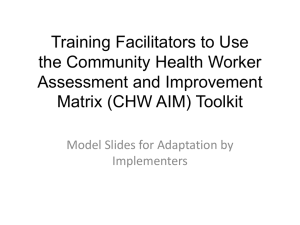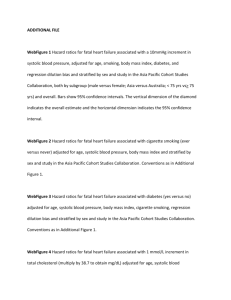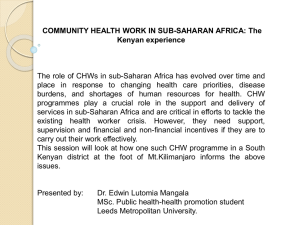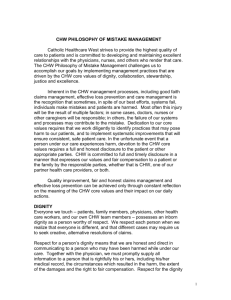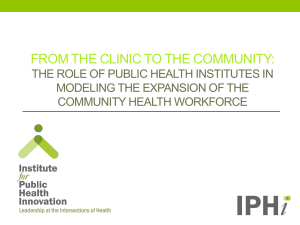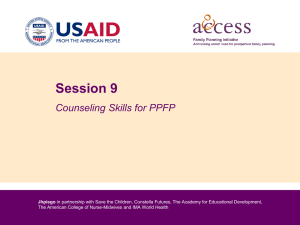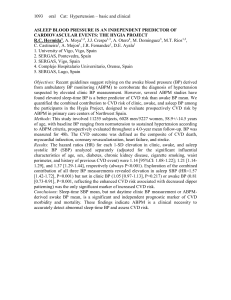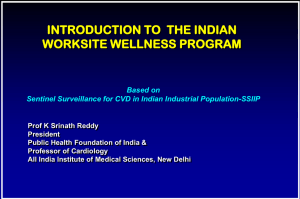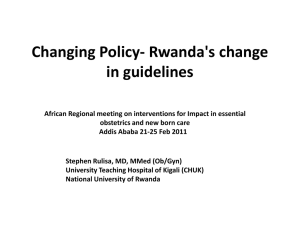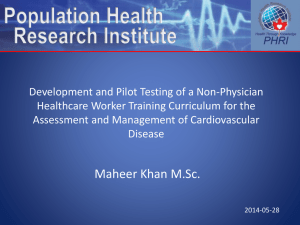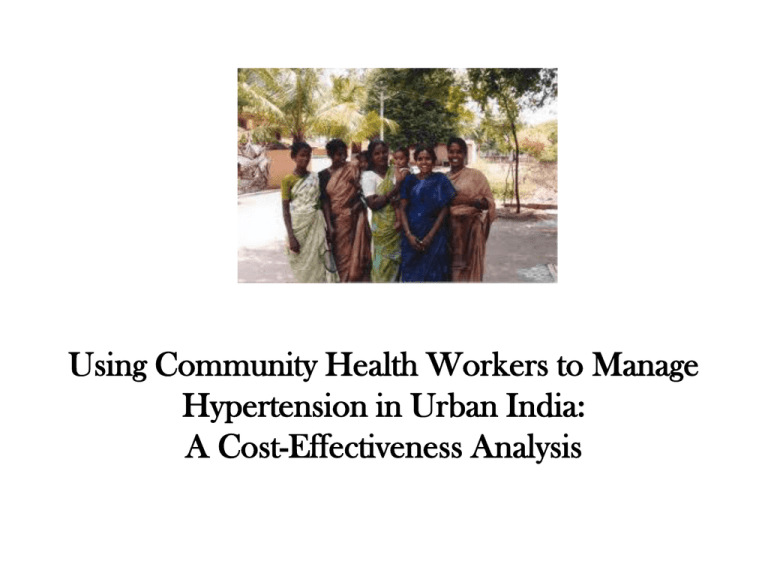
Using Community Health Workers to Manage
Hypertension in Urban India:
A Cost-Effectiveness Analysis
Adrianna Murphy, M.Sc.
London School of Hygiene and Tropical Medicine; Harvard School of Public Health
Joshua Schulman-Marcus, M.D.
Columbia University Medical School
Dorairaj Prabhakaran, M.D., M.P.H.
Centre for Chronic Disease Control
Tom Gaziano, M.D., PhD.
Harvard Medical School; Harvard School of Public Health
Burden of CVD in India
Source: KS Reddy. 2007. ”India wakes up to the threat of cardiovascular diseases"
Journal of the American College of Cardiology. Oct 2;50(14):1370-2
A potential role for Community Health Workers ?
The Evidence:
•
•
•
•
•
Lin, T. et al; 2004
Yuchi, Taiwan
6 visits by CHWs
3.8 mm/Hg reduction
for men
7.1 mm/Hg reduction
for women
The Evidence:
•
•
•
•
Levin, et al.; 2003
Inner City Baltimore
1 visit from CHW
6.5 mm/Hg reduction
To analyse cost-effectiveness:
• Estimate risk of CVD events (fatal and non)
• Estimate cost of CVD events
• Design hypothetical CHW intervention
• Estimate costs of CHW intervention
Risk: Global Markov CVD Model
Population estimates
Adults ages 35-74
By age and sex
UN Population Division
Distribution of risk factors
Region specific
Global Burden of Disease Project
Ten-year risk of CVD events
Framingham Risk Score
Annual probability of nonCVD death
Based on life tables
WHO
Fatal or nonfatal CVD
events
Costs: Global Markov CVD Model
Likelihood of hospitalization
or secondary treatment
WHO PREMISE
Cost of medications
Management Sciences for Health
Cost of clinic visits and
hospitalizations
WHO CHOICE
Cost of CVD
CHW intervention: design
+
= 3 mm/Hg reduction in systolic blood pressure
CHW intervention: costs
• Cost estimates from WHO-CHOICE; expert
opinion
• CHW salary = 3,908 USD/year
• Total cost of intervention for one year =
$ 141, 904; $6.44/patient, $3.22/visit
Results
• $141,000 cost offset by $110,000 saved
• 65 DALYs averted annually
• $475/DALY averted
Results: sensitivity analysis
• +/-25% of overall program costs
• $140-1600 per DALY averted
• CHW salary below $1,400 or number of visits
reduced = intervention cost-saving
Results: sensitivity analysis
• 3 to 7 mm/Hg decrease
• At 5mm/Hg ICER = $180/DALY averted
• Anything above 5.3 mm/Hg reduction =
intervention cost-saving
Conclusions
A hypothetical intervention for which CHWs are
paid $3900 annually, and achieve a 3 mm/Hg
reduction in blood pressure is very cost-effective.
At higher estimates of blood pressure reduction
the intervention becomes cost-saving.
CHW intervention may also lead to
improvements in other CVD risk factors and
reductions in CVD-related morbidity would
likely lead to increases in work productivity.


